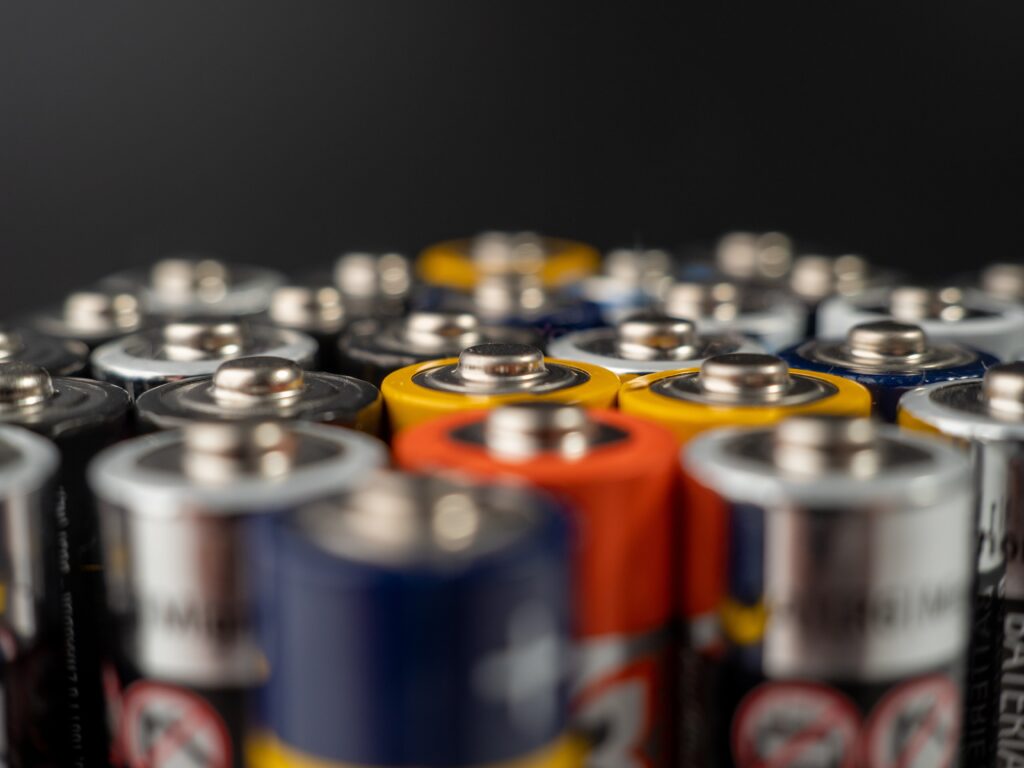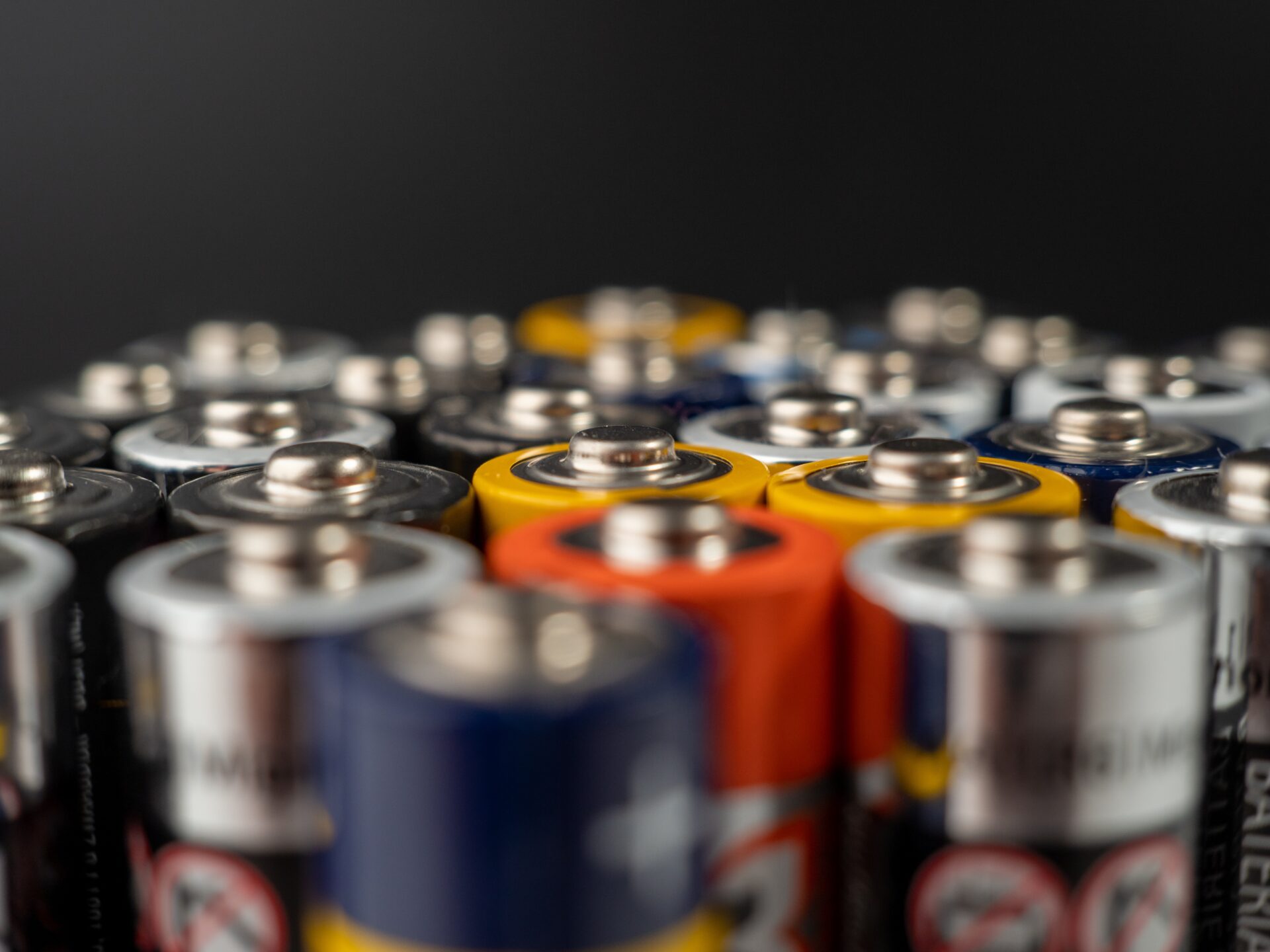Battery Recycling
At Recipo, we strive to create a circular economy where all materials used in products such as batteries and electronics can be recycled and reused. Therefore, we want to explain how we handle battery recycling and the management of battery waste collected through our collection system.

How are Batteries Recycled at Recipo?
When we collect batteries and other electrical waste, they are sent to our recycling stations. One of the first steps there is a sorting process, during which all hazardous waste is separated.
Since batteries are classified as hazardous waste, they are sorted out early in the process. The recycling method for each type of battery depends on its composition. Therefore, all collected batteries need to be categorized.
Here’s a step-by-step explanation of our recycling process:
Step 1: Batteries are categorized based on their size and content.
Step 2: Batteries containing mercury are separated from the rest.
Step 3: Once categorized, batteries are crushed, and their materials are separated. For example, alkaline batteries (the most common type) consist of metal and a “black mass” that includes carbon. These components must be separated.
Step 4: Plastics and various metals are further sorted and used to create new products.
Step 5: Hazardous waste is properly managed and stored.
The Importance of Proper Recycling
Batteries contain various materials, including plastics and metals like iron, nickel, and zinc. Almost all battery materials can be recycled and used in new products, but only if the batteries are sent for recycling.
It’s crucial to send batteries to the right recycling facilities so they can be sorted and transformed into new products. Otherwise, they end up in household waste, posing risks to the environment and human health.
Handling Battery Waste for Different Types of Batteries
Let’s explore how we recycle different battery types.
Alkaline Batteries
Alkaline batteries are the most common household batteries, coming in various shapes (round and square). Surprisingly, only slightly under 50% of household batteries are recycled.
Alkaline batteries consist of metal and the “black mass.” Unfortunately, this mass cannot be recycled and is securely stored instead
Lithium Batteries
Lithium betteries are more murderous and consist of two different types.
Primary Batteries
These cannot be recharged and are found in items like watches. Due to their small size, they are challenging to recycle. Instead, efforts focus on converting them into new energy.
Lithium-ion Batteries
These rechargeable batteries are used in modern devices like laptops, mobile phones, and electric vehicles. At recycling centers, they are broken down into base materials.
Metals like cobalt and lithium are extracted for reuse. Approximately 90% of lithium-ion battery materials can be recycled.
Cadmium Batteries
Portable cadmium batteries have been banned from the market since early 2024 due to their toxic content. To safely recycle them, their components are separated and handled at secure facilities.
Nickel Metal Hydride Batteries
Nickel metal hydride batteries are a modern variant that has replaced cadmium batteries. We most commonly recognize them as rechargeable AA batteries, and they are up to 90% recyclable.
These batteries are recycled by extracting and melting down metals such as nickel and iron to be used in new products.
Lead-Acid Batteries
Lead-acid batteries are common in cars and can also be found in certain tools. They are called lead-acid batteries because they contain the heavy metal lead. Up to 74% of the materials from these batteries can be reused.
The recycling process for lead-acid batteries involves first removing and neutralizing the acids in the battery. The lead is then extracted for reuse in new products.
Mercury Batteries
Mercury batteries contain the toxic heavy metal mercury and are particularly harmful to the environment. At Recipo, we separate mercury batteries from other batteries early in our recycling process.
The mercury is separated from all other battery materials and then safely stored to prevent environmental impact. Other metals from the battery are sorted and reused as usual.
Frequently Asked Questions
What do you do with old batteries?
Old batteries can either be handed in at municipal recycling stations or at shops that sell batteries. They have a producer responsibility and are obliged to receive them. Many garbage rooms at apartment buildings also have battery boxes where you can put batteries.
Why you shouldn't throw away batteries?
Many batteries contain environmentally hazardous substances that can harm nature if they end up in household waste. It can be anything from mercury to lead that needs to be neutralized and stored in a safe place.
